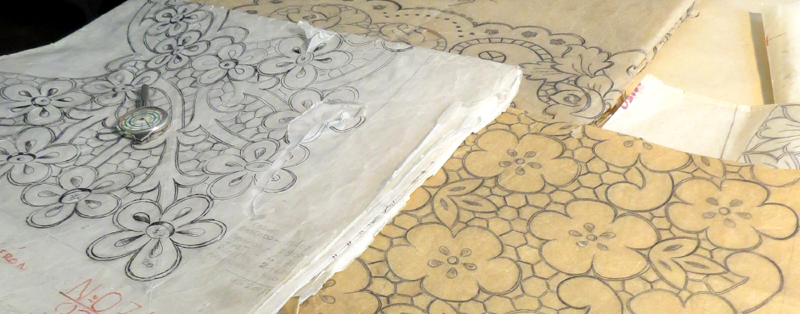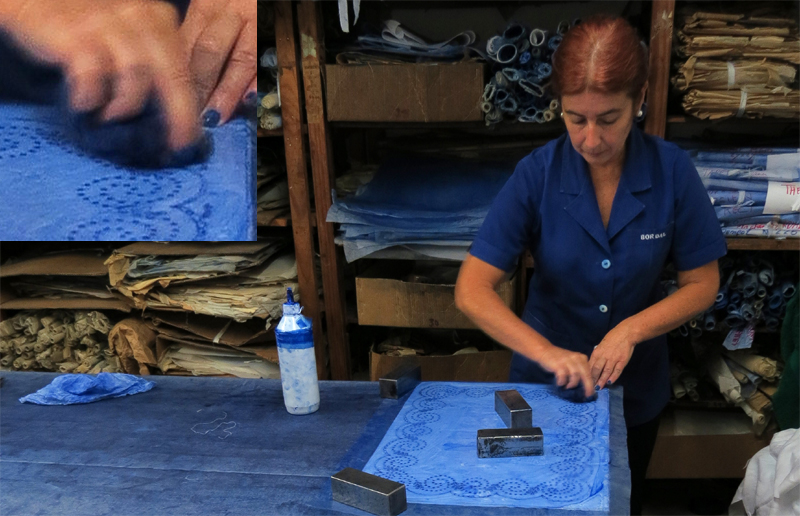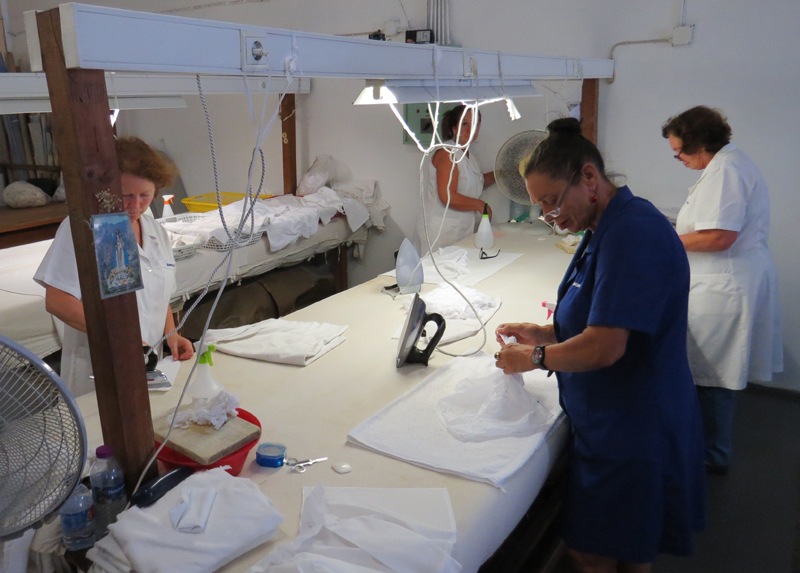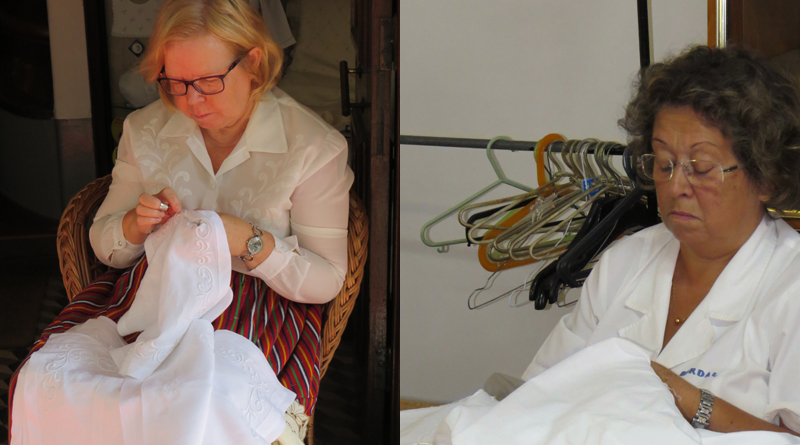EMBROIDERY FACTORIES OF MADEIRA
Visiting an embroidery factory may not be the first thing you think of doing while on holiday on the sunshine island of Madeira – but before you dismiss it, let me explain why I think it’s an hour well spent.
Embroidery has been a traditional activity on the island of Madeira for hundreds of years. Originally the embroidery was just for personal use, but in the 1860s all that changed.
The story goes that Elizabeth Phelps, the youngest daughter of a wealthy wine shipper, wanted to help boost the incomes of the families working the vineyards. So, she set out to turn the rural pastime of embroidery into a cottage industry. Originally from England, Phelps used her family connections to sell Madeiran embroidery to wealthy Victorians, creating a vibrant industry that is still around today – and is still produced as it has always been; by hand.
A visit to the Bordal embroidery factory in Funchal is free – and you’ll learn a lot.

The first stop is the design process. Generally inspired by nature the designs are drawn on to a form of tracing paper. Once completed a small tool known as a ‘curvimetro’ is run along every line of the design, and this calculates the number of ‘points’ for this design. The points dictate the amount of money paid to the embroiderers for their work. This rate is set by the government – and currently works out to the equivalent of around one Euro per hour. Unsurprisingly no one works fulltime as an embroiderer – it’s a side job, mainly done by older women living in rural areas. The lack of young embroiderers (currently their youngest is 45 years old) is something the industry is aware of – but not yet taking any real steps to address.
Once the design is complete a ‘picote’ is used to punch tiny holes in the paper, carefully and accurately following the design.

Then powdered indigo is used to transfer the design on to the cloth. Basically, the paper with the holes is laid over the fabric, then indigo is rubbed over the paper – transferring to the fabric below via the tiny holes. This is known as ‘stamping;’. The result is a perfect reproduction of the pattern for the embroiderers to follow.
If the fabric needs to be turned into an item before embroidery – then this is when it is stitched.
Next the stamped fabric goes to the embroiderers – none of whom actually work in the factory itself. This is still a cottage industry, and women arrive at the factory to collect the stamped fabric and coloured thread, which they then take home, and return when the work is completed.
Each piece is checked for quality and is then passed to the next stage; washing. All the washing is done by hand in order to remove the traces of indigo.

Next, comes ironing, and then cutting and finishing. The cutting is a complex process of removing sections of fabric and embroidering the edges. This cutwork creates a three-dimensional effect allowing colours or fine organza fabric to be revealed underneath.
Once the item has been finished it is inspected once more by The Madeira Institute of Wine, Embroidery and Handicrafts, which is responsible for quality control. If the item passes, a guarantee stamp is attached to it – so you can be sure what you are buying is authentic and of high quality.
Once the tour is over you are taken through to the shop. Whether you are buying a piece of beautiful embroidery or not, it is worth spending a few minutes admiring the skill and time that has gone into its production – and remembering that this is a dying art, one that may be not be around for many more years.
FACT BOX
Bordal embroidery factory
Meliã Madeira Mare Hotel & Resorts
http://www.madeiraallyear.com/en

